10 of our Favorite Churches from Around the World
Meeting Believers from around the world is a distinct hallmark of Christian travel. And nothing conveys a people group’s unique perspective of and devotion to God more than their place of worship. As Christian travelers, we have the opportunity to not just appreciate the architecture of these buildings, but to encounter God in each place. The stories they tell shed light on national histories and beckon us to experience the One True God through the lens of another’s faith. So, come on this journey with us for an insider’s look at churches, chapels and cathedrals we’ve explored around the globe.
1. King's College Chapel
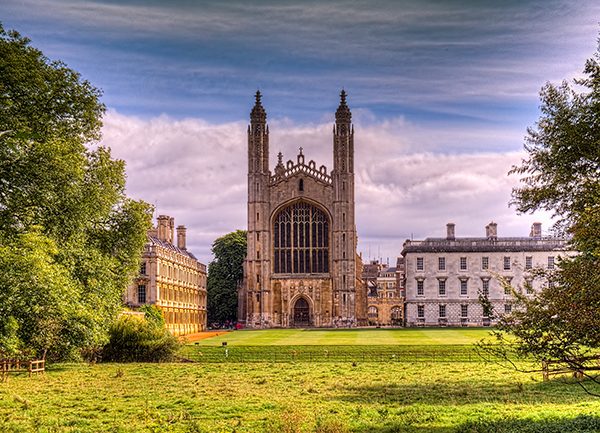
Cambridge, UK
Completed in 1446 upon the request of college founder Henry VI, this chapel’s soaring stained glass windows and intricate vertical lines make it one of the world’s most admired examples of Perpendicular Gothic English architecture. While you’re there, look up: Nearly 80 feet above the ground, almost as long as a football field, is the largest fan vault ceiling in the world.
MUST SEE: The world-famous painting The Adoration of the Magi by Peter Paul Rubens, painted in the 17th century, sold in 1959 for a record-breaking amount to an English businessman, who then donated it to the college. The painting has been installed as the chapel’s altarpiece.
2. St. Michael's Cathedral
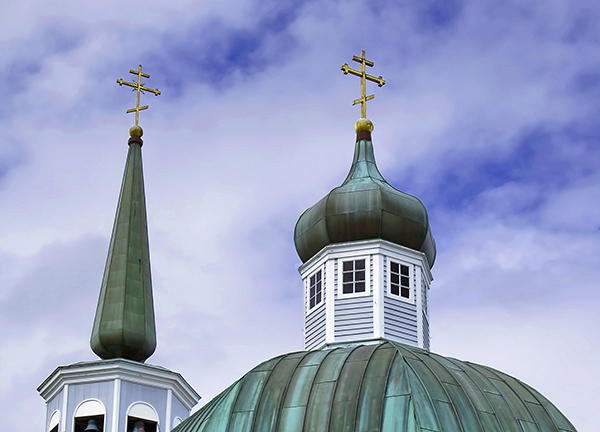
Sitka, AK
Within sight of Crescent Harbor, where cruise ships dock, stands the earliest Orthodox cathedral built in the New World. Russia controlled Alaska in the 19th century, and in 1844 a Siberian-born priest laid the first foundation stone for this domed church. Still part of an active religious community as well as a historical landmark, St. Michael’s green dome and golden crosses are visible throughout Sitka.
MUST SEE: After most of the original wooden cathedral burned down in 1966, St. Michael’s was immediately rebuilt to match its previous structure. Look for the two elements of the cathedral that survived the fire: the original royal doors in the center of the Iconostasis (wall of icons) and the chandelier.
3. The Cathedral of San Juan Bautista
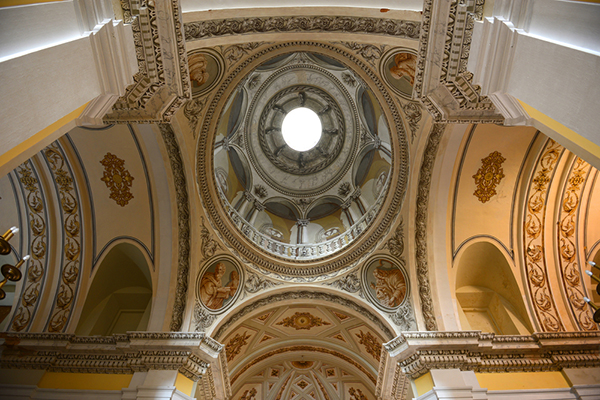
San Juan, Puerto Rico
This Roman Catholic cathedral is one of the oldest buildings in historic San Juan, built on the site of the second-oldest church building in the western hemisphere. Erected in 1521 only to be destroyed by a hurricane, parts of the church date back to 1540. The present-day facade, painted bright yellow against the blue Caribbean sky, was restored in 1917.
MUST SEE: In addition to the entombed remains of Ponce de León, Puerto Rico’s first governor, a side altar also houses a glass box containing the wax-covered, mummified body of St. Pius, a first-century Roman Christian martyred for his faith.
4. St. Paul's Cathedral
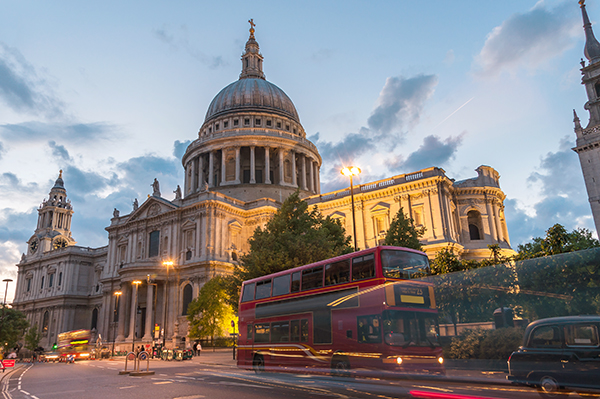
London, UK
This 17th century cathedral is one of the most iconic buildings on the London skyline. Winston Churchill insisted it be protected from Nazi air raids. Firefighters and engineers risked their lives to save the great dome from falling bombs. A famous photograph shows the dome and spires of St. Paul’s Cathedral standing tall after the Blitz of World War II, a prominent reminder of British resolve.
MUST SEE: The original cathedral was consecrated in 1240 only to be destroyed during the Great Fire of London in 1666. Today, in the south aisle of St. Paul’s, you’ll see three marble effigies, including a statue of poet John Donne. It’s one of the few monuments that survived the Great Fire of London, and scorch marks are still visible at its base.
5. Borgund Stave Church, Norway
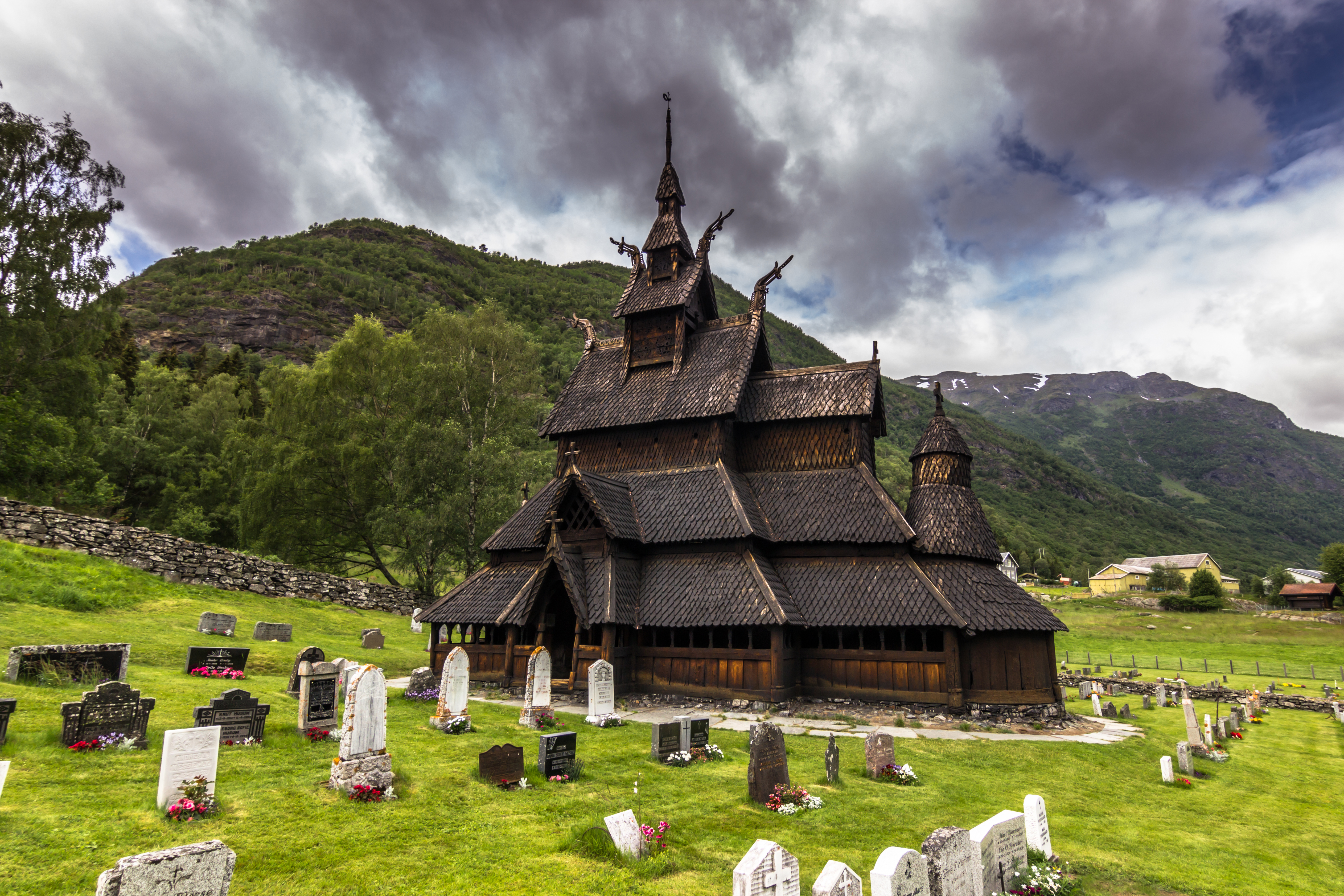
Borgund, Norway
Medieval wooden Christian structures known as stave churches are located throughout Norway and are considered a significant part of the nation’s heritage. One of the most striking is in the small village of Borgund. Dedicated to the Apostle Andrew and affiliated with the Protestant Church of Norway, it’s considered the best-preserved of Norway’s 28 remaining stave churches. Tree-ring dating indicates the timber used for its construction was felled in the winter of 1180-1181.
MUST SEE: Look for the ancient runic inscriptions carved into the walls of the church by long-ago worshipers. Near the west portal, one piece of graffiti reads “Thor wrote these runes in the evening at St. Olav’s Mass.”
6. Shrine of St. Therese Chapel
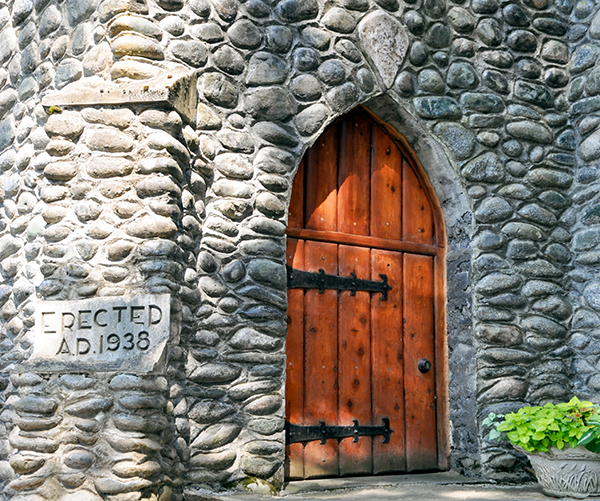
Juneau, AK
Hidden amidst the Tongass National Forest 22 miles north of Juneau, sits a rustic stone chapel dedicated to St. Thérèse of Lisieux, the patron saint of Alaska. The chapel and its surrounding retreat center were built in this peaceful setting in 1938. Today, visitors from all over the world arrive to get married, rent cabins or spend time in prayer while strolling the beautiful grounds.
MUST DO: Be sure to take a walk along the property’s many trails—including the Good Shepherd Trail and Merciful Love Labyrinth. The shrine is located directly on the ocean, and breaching whales are often visible in the waters below.
7. St. Paul's Church
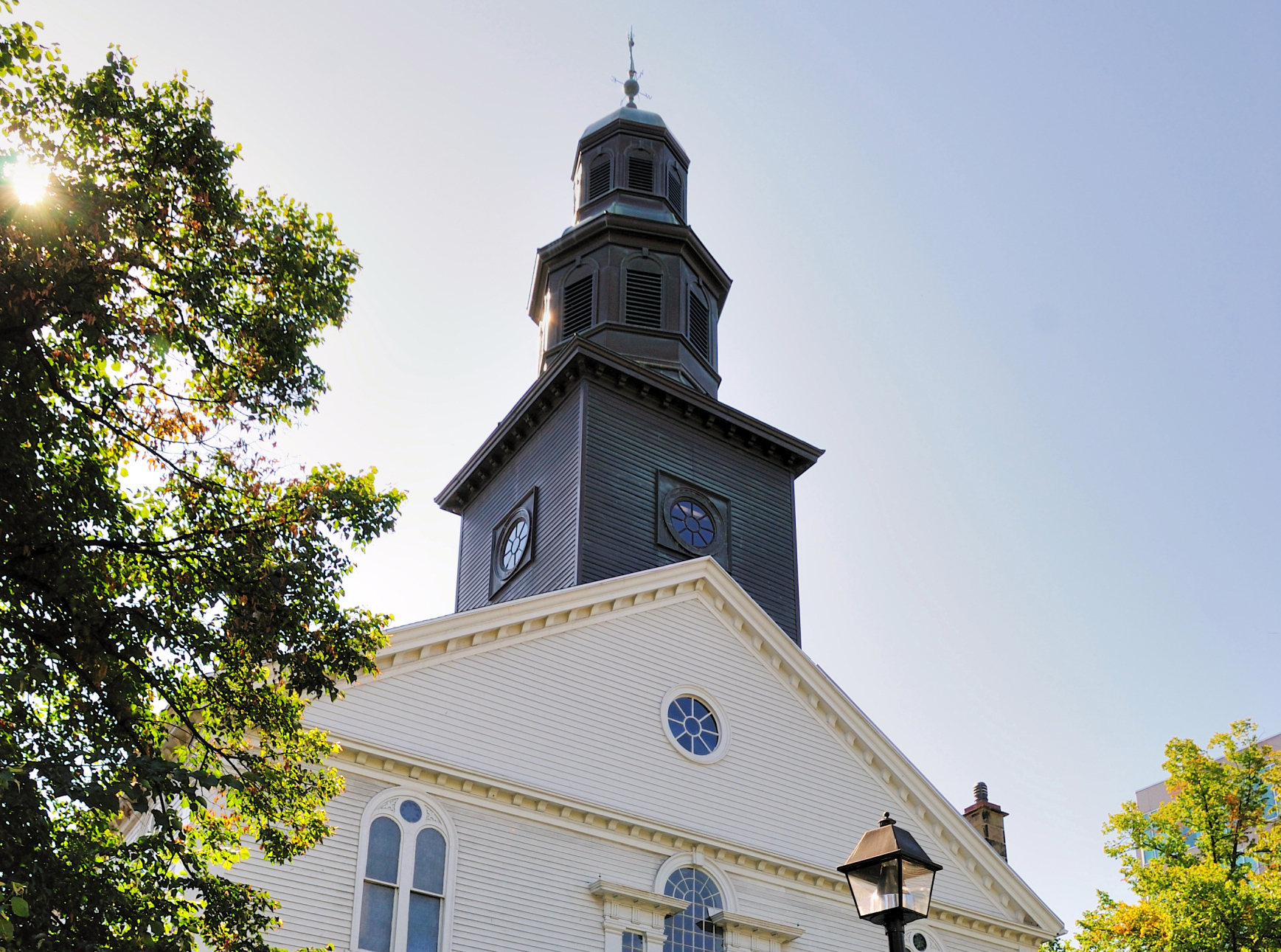
Halifax, Nova Scotia
The first Anglican church built outside of England, St. Paul’s was founded in 1749 and is the oldest building in Halifax. This Georgian-style building took ten years to complete and was based on the design of St. Peter’s Church in London. In 1912, following the sinking of the Titanic, Halifax received the bodies of many recovered victims. Their funeral services took place here before burial in local cemeteries. Now a historic landmark, the church continues to be used for worship today.
MUST SEE: On Dec. 6, 1917, two ships collided in Halifax Harbour. One carried a load of wartime ammunition, and, after catching fire upon impact, the ship exploded. Known as the Halifax Explosion, the disaster ripped through the city, killing 1,600 people instantly. The blast sent a wooden piece of window frame from another building flying into the narthex wall of St. Paul’s, where it is still lodged today.
8. Church of the Holy Sepulchre
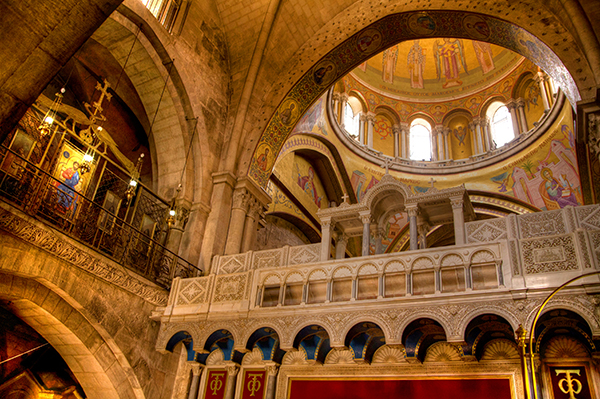
Jerusalem, Israel
Also known as the Church of the Resurrection, this Eastern Orthodox cathedral is considered by many to be one of the holiest sites in the world, encompassing on its grounds the possible site of Calvary and the tomb where Jesus Christ may have been buried. The site was already a pilgrimage site by the early 4th century, and Emperor Constantine began building here in 326 AD.
MUST SEE: On the main floor is the Chapel of Adam, where a cracked slab of rock is displayed behind glass. According to tradition, the crack in the rock occurred during the earthquake that happened at the moment of Christ’s death.
9. Erfurt Cathedral
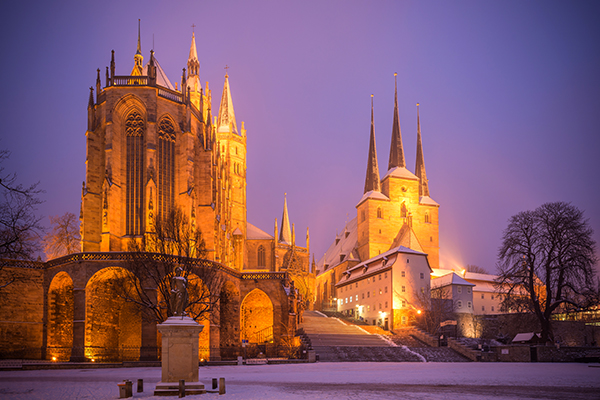
Thuringia, Germany
Also known as St. Mary’s Cathedral, this unforgettable hilltop Gothic church is surrounded by the deep green Thuringian Forest. While sections date back to 742 AD, its Gothic architecture was constructed in the 14th century. The magnificent stained glass windows encircling the worshipper are stunning. However, the medieval structure is best known for having been the church where Martin Luther was ordained to the priesthood in 1507.
MUST SEE: In the central spire of the three towers above the cathedral is the Maria Gloriosa, the world’s largest free-swinging medieval bell. Cast in 1497 by Geert van Wou—one of the most renowned bellfounders of the Middle Ages—the bell is known worldwide for its clear, beautiful tone.
10. Bethlehem Chapel
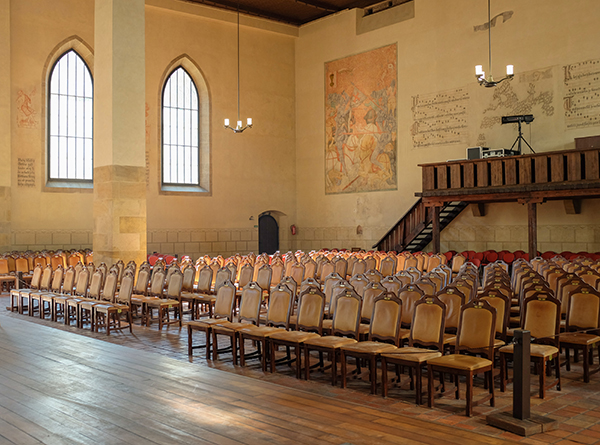
Prague, Czech Republic
Founded in 1391 and restored in the mid 20th century, this humble structure stands apart not for its architecture or beauty, but for having been the chapel where Protestant reformer Jan Hus preached, starting in 1402. After excommunicating Hus, the Pope ordered his chapel to be destroyed. It survived, only to be gutted in 1786 after falling into disrepair.
MUST SEE: Tucked away from the ornate thoroughfare of historic Prague, this chapel is truly a hidden gem. Once inside, you’ll discover the treasure of Jan Hus’ simple and austere wooden pulpit from which he preached for ten years.






